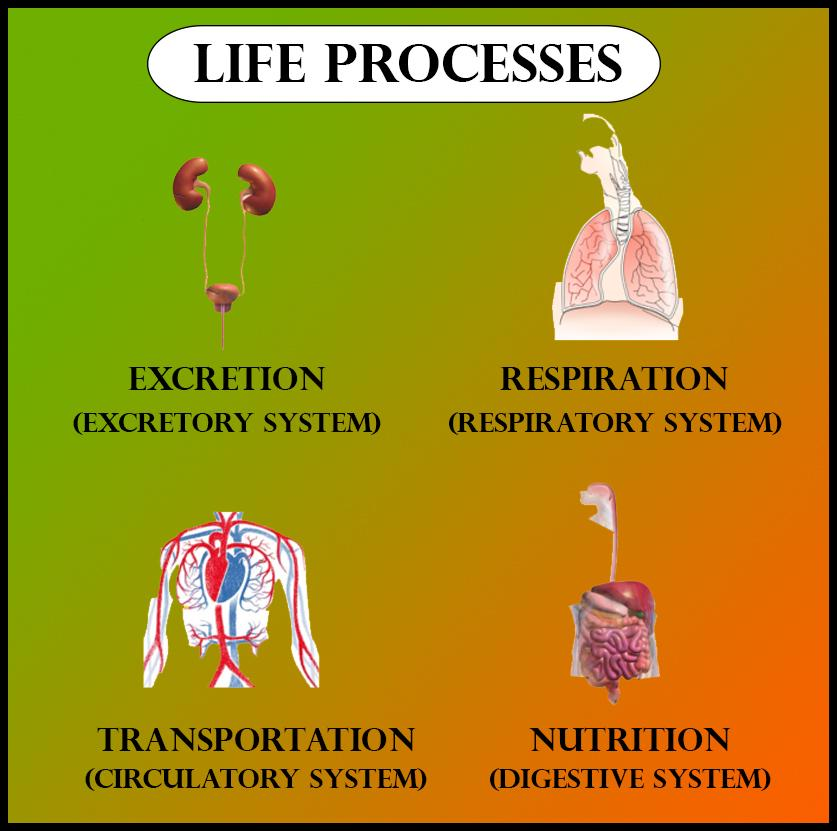
What is living?
Answer
478.5k+ views
Hint: These are things that display characteristics of an organized structure, being made up of a cell or cells and require energy to survive or sustain existence.
Complete answer:
Living means being alive. Every single person around you needs to breathe and stay healthy and to be happy. Something that can grow, move, reproduce, consciousness, respire, and carry out various cellular activities are said to be living.
Living things can grow, move, reproduce, respires i.e. possess various life processes.
Living things have structures known as cells; they grow and exhibit movement or locomotion. They experience metabolism, which includes anabolic and catabolic reactions.
They are capable of producing a new life which is of their kind through the process of reproduction. Living things have a specific lifetime and aren't immortal.
Living things acquire and fulfill their nutritional requirements to survive through the process of nutrition and digestion, which involves engulfing and digesting the food.
Digested food is eliminated from the body through the process of excretion.
All living things move in some way. This may be obvious, like animals which will walk, or less obvious, like plants that have parts that move to trace the movement of the sun.
The science of classifying living things is called taxonomy. Classifications made by modern scientists are mainly based on molecular similarities. They group organisms that have similar proteins and DNA. These similarities show that organisms are descendants of a common ancestor in the past.
Note: -Carolus Linnaeus, the Swedish botanical taxonomist who was the primary person to formulate and cling to a consistent system for outlining and naming the world's plants and animals.
-The benefit of classifying organisms is as follows: (i) Classification facilitates the identification of organisms. (ii) helps to determine the connection among various groups of organisms. (iii) helps to study the phylogeny and evolutionary history of organisms.
-These are things that display characteristics of an organized structure, being made up of a cell or cells and require energy to survive or sustain existence.

Complete answer:
Living means being alive. Every single person around you needs to breathe and stay healthy and to be happy. Something that can grow, move, reproduce, consciousness, respire, and carry out various cellular activities are said to be living.
Living things can grow, move, reproduce, respires i.e. possess various life processes.
Living things have structures known as cells; they grow and exhibit movement or locomotion. They experience metabolism, which includes anabolic and catabolic reactions.
They are capable of producing a new life which is of their kind through the process of reproduction. Living things have a specific lifetime and aren't immortal.
Living things acquire and fulfill their nutritional requirements to survive through the process of nutrition and digestion, which involves engulfing and digesting the food.
Digested food is eliminated from the body through the process of excretion.
All living things move in some way. This may be obvious, like animals which will walk, or less obvious, like plants that have parts that move to trace the movement of the sun.
The science of classifying living things is called taxonomy. Classifications made by modern scientists are mainly based on molecular similarities. They group organisms that have similar proteins and DNA. These similarities show that organisms are descendants of a common ancestor in the past.
Note: -Carolus Linnaeus, the Swedish botanical taxonomist who was the primary person to formulate and cling to a consistent system for outlining and naming the world's plants and animals.
-The benefit of classifying organisms is as follows: (i) Classification facilitates the identification of organisms. (ii) helps to determine the connection among various groups of organisms. (iii) helps to study the phylogeny and evolutionary history of organisms.
-These are things that display characteristics of an organized structure, being made up of a cell or cells and require energy to survive or sustain existence.

Recently Updated Pages
Master Class 11 Accountancy: Engaging Questions & Answers for Success

Glucose when reduced with HI and red Phosphorus gives class 11 chemistry CBSE

The highest possible oxidation states of Uranium and class 11 chemistry CBSE

Find the value of x if the mode of the following data class 11 maths CBSE

Which of the following can be used in the Friedel Crafts class 11 chemistry CBSE

A sphere of mass 40 kg is attracted by a second sphere class 11 physics CBSE

Trending doubts
10 examples of friction in our daily life

Difference Between Prokaryotic Cells and Eukaryotic Cells

One Metric ton is equal to kg A 10000 B 1000 C 100 class 11 physics CBSE

State and prove Bernoullis theorem class 11 physics CBSE

What organs are located on the left side of your body class 11 biology CBSE

Define least count of vernier callipers How do you class 11 physics CBSE




